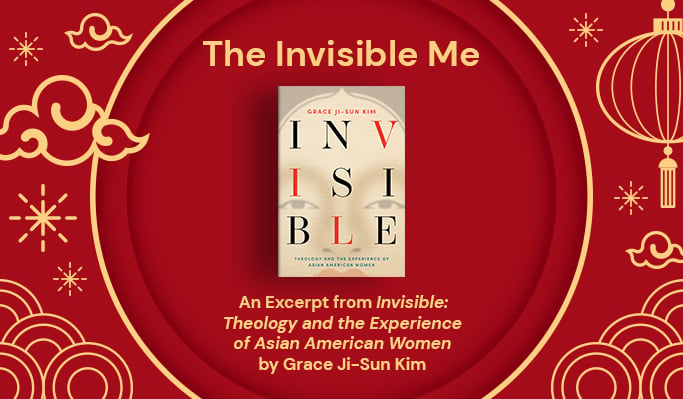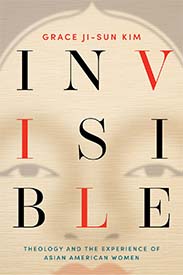
Invisibility persists throughout the Asian American story.
Occupying a vague social status, the Asian American has long been perceived as a deferential foreigner, an individual with economic significance who exercises their inherent diligence in academic and professional spaces but possesses little social importance. The Asian American remains meek in the dominant American imagination—taking place in the quiet, homogenous, resigned, productive, and advancing enclaves of society. While a sense of rapid growth, competence, and social apathy dominates the present stereotype of Asian Americans, only a century ago, Asian Americans were perceived as illiterate, unappealing, “filthy and disease-ridden,”1 unassimilable and marginal members of the human race who were denied the right to become naturalized American citizens and were instead segregated to isolated ethnic enclaves.
Despite the various challenges Asian Americans have faced, they are rarely considered worthy of discussing as a community because they do not seem to contend with the same limitations and polarizing concerns that other racial minorities seem to face. As a result, Asian Americans are widely excluded from mainstream discussions of race in this country, erased into obscurity amid an American racial paradigm that shifts obsessively between Black-and-white oppositions. Asian Americans do not fit in on either side and thus remain in an unstable state where they can be designated as good or bad depending on political tempers—becoming emblems of the “model minority” one moment and foreign threats the next.
Even more indiscernible in America’s racial landscape are Asian American women. The compounded effects of a patriarchal Asian culture and a white-dominant American culture are formidable, steadily removing these women from America’s field of vision. Most Asian American women occupy a more enclosed, hidden sociocultural space than their male counterparts. They are not afforded the same responsibilities or freedoms within their communities, and outside of their communities, they are often forced to challenge the stereotypical image of the Asian American female that predominates: a submissive, sexualized, exotic being. Subsequently, most Asian American women have been denied their agency and have had their distinctive voices stifled behind community walls. Such invisibility, particularly in regard to issues pertaining to gender discrimination and sexual or domestic violence, has continued the legacy of shame that courses through the history of all Asian women. Furthermore, the Asian American church—a place where immigrants have gathered for safe, separate congregation and socialization outside white society—puts women in places of secondary importance, relegating their work to domestic, supportive roles meant to uplift male leaders and organizers. In a place that provides the opportunity for leadership, particularly in a society that permits sparse room for Asian American leaders, these churches deny women the chance for empowerment. The strong patriarchal framework both in the church and in Asian culture perpetuates such ongoing marginalization. The hybrid, liminal spaces that Asian American women occupy turn into barely visible shadows. It is vital that Asian American women resurrect their histories, experiences, and stories from obscurity.
My story is like many who were born in Asia and brought to America: we are immigrant children who psychologically live within our parents’ generational sacrifice—often in a state of reparation for their sufferings—while also harboring our own growing personal ambitions and desires to explore ourselves outside of familial and cultural expectations. My story is not much different from women in my mother’s generation or those who came before her. However, unlike them, I have the opportunity to share not just my own story but the stories of Asian American women in a historical and contemporary context. In doing so, I hope to provide greater insight into the Asian American female consciousness so others can gain a better understanding of our history and interpretation of the world.
Racism
Since their first major arrival in the United States in the 1850s, Asian Americans have been degraded by Eurocentric standards of race and othered in American society. First as indentured workers in Hawaii and on the mainland, they were hobbled by laws, actions, and behaviors that legitimized racist attitudes and facilitated social oppression. This oppression came to the fore through congressional laws such as the Chinese Exclusion Act, Japanese internment during World War II, and the denial of voting rights to Asian immigrants. Asian Americans also experienced racism through negative language and stereotypes and were given labels such as perpetual foreigner, honorary white, and model minority2—all of which minimized the Asian American plight.
Myths created by white mainstream society have followed Asian Americans for decades, falsely elevating the Asian minority as the model for other minorities to emulate while suppressing Asian Americans’ real concerns because of their presumed prosperity. The “model minority” stereotype ignores the reality of Asian American economic life, as they exhibit the greatest economic disparity among any other racial group in the United States. These labels and stereotypes become integrated into the consciousness of minorities, facilitating the harmful internalizations of these false perceptions. For Asian Americans who are able to consume and perform such stereotypes in dominant spaces, this internalized racism allows for the continued ignorance of discrimination against them in often subdued, innocuous expressions. These false notions of success and prosperity have hidden the truths of Asian Americans’ lived experiences, rendering them as socially peripheral and culturally insignificant.
Invisibility
Though Asian Americans have been part of American society since the mid-1850s, they have been consistently made invisible through marginalization and the troubled understanding that Asian American issues are not civil rights issues. As distant, minor, “honorary whites,” their experiences of racism are diminished. The contemporary invisibility of Asian Americans begins at this point of misunderstanding.
The dominant white culture minimizes Asian Americans because white people feel no sense of urgency around them. There have been many instances when either I or someone else shared experiences of racism and had them immediately downplayed. Friends, colleagues, and ministers would look at me plainly after hearing me confess things that had been said to me, telling me, “That isn’t that racist,” “It could be worse,” or “It’s not that bad for Asians.”
In the Bible, the concept of invisibility is prominent in such stories as the foreign women in the book of Ezra, the lepers, the Samaritan woman, and Mary Magdalene. Invisibility as a theological concept can help us understand the dynamics of human interaction, teaching us to be more cognizant of oppressed peoples. It is important to recognize that as much as invisibility is a societal issue, it is also a spiritual one—and this is especially important in discussions surrounding the church.
The Western church has historically masked the concerns of Asian Americans. This has caused great damage to Asian American women, who often already exist under oppressive circumstances within their community. Being part of God’s “kin-dom” should confer agency, voice, and recognition.3 Asian Americans, and Asian American women specifically, represent a significant body of discounted people. The marginalization of Asian Americans is becoming increasingly important to address as the center of Christianity shifts from Europe to the Global South and the East. Asian and white Eurocentric theologies will continue to influence one another. Therefore, Western theology must decenter, in tandem with globalization, and welcome Asian American voices and doctrines.
Asian American women’s voices are necessary. They are essential in the quest to bring all the complexity and richness of Asian philosophy, religion, culture, and heritage to a liberative, reimagined theology. As Asian American women construct a theology of visibility, they uplift the voiceless and empower the invisible, moving beyond experiences of oppression and toward claimed spaces in the kin-dom of God. We seek that union, and we seek that others join in so that the wider society can understand, honor, and dignify Asian American women as full members of the kin-dom of God.
This is an excerpt from Invisible: Theology and the Experiences of Asian American Women by Grace Ji-Sun Kim.



